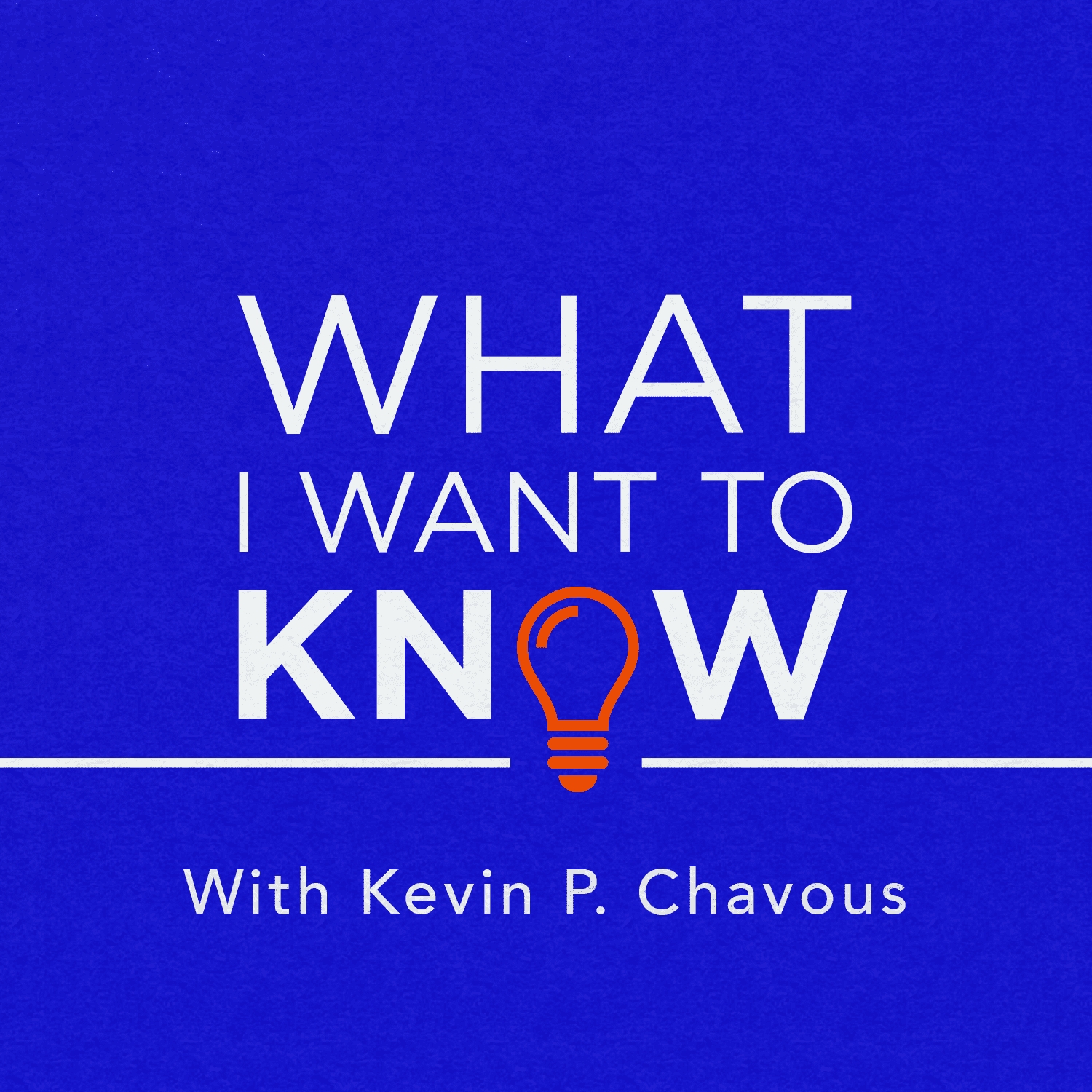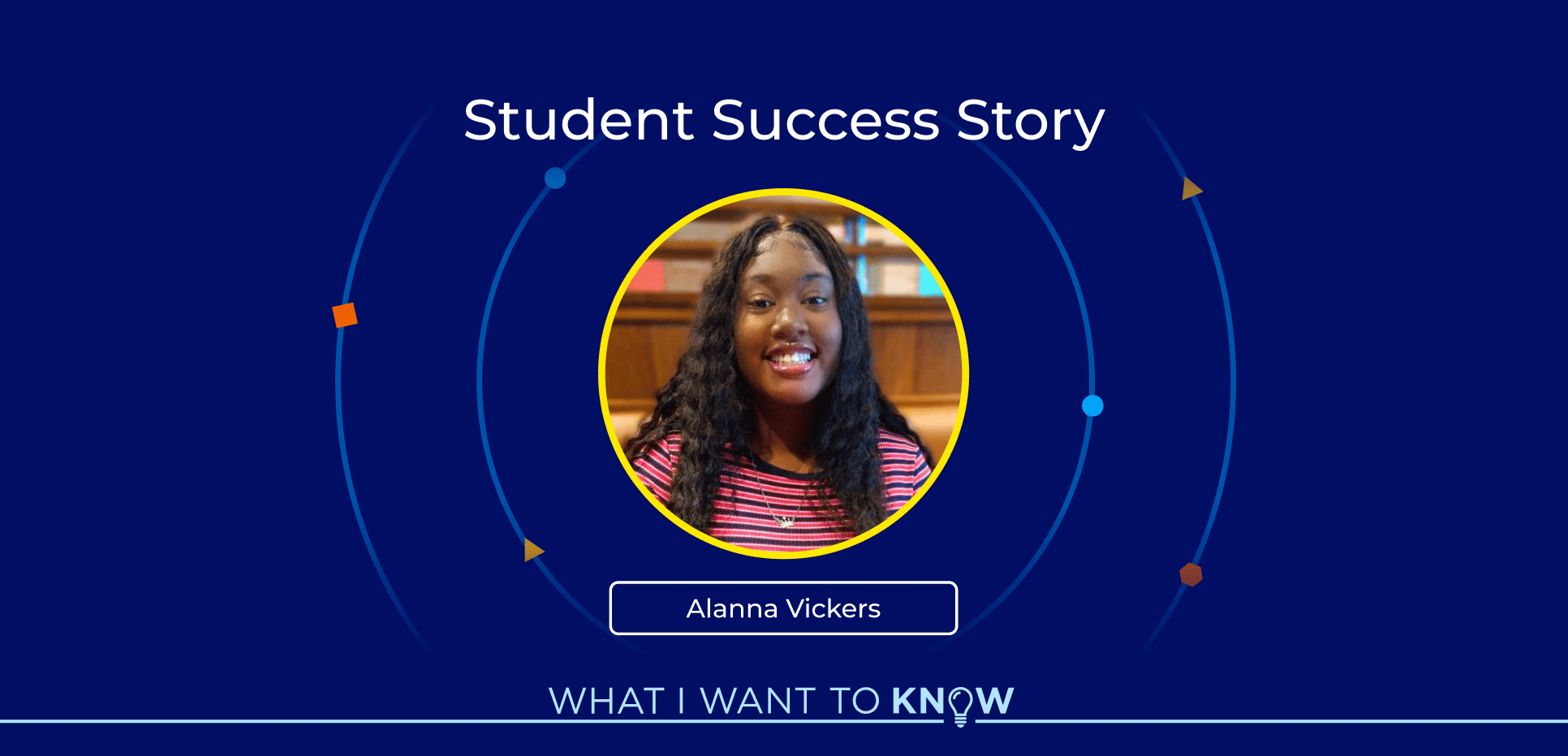While math has never seemed to be the most popular subject, students are increasingly falling behind nationwide. Research shows student scores have dropped since the pandemic, especially in math.
Are teachers equipped to help students not only understand math, but excel at it? What makes math difficult for so many students? And how can we reframe the subject for students and encourage a love of math?
In this episode, Kevin discusses how we can reframe the narrative around math with the founder and president of Bedtime Math Foundation, Laura Overdeck.
Listen to the Full Audio
Listen on: Apple Podcast, Spotify
Transcript
Kevin: While math has never seemed to be the most popular subject, students are increasingly falling behind across the nation. Research shows that students’ scores have dropped since the pandemic, especially in math. Are teachers equipped to help students not only understand math but excel at it? What makes math difficult for so many students? And how can we reframe the subject for students and encourage a love of math? This is What I Want to Know. And today, I’m joined by Laura Overdeck to find out.
Kevin: Laura Overdeck is the founder and current president of the Bedtime Math Foundation, a nonprofit aimed at igniting kids’ curiosity and making math more engaging. She works with parents and children to show them how to use math every day and that it can be fun. Laura is also the author of four bestselling children’s books, including “Bedtime Math: A Fun Excuse to Stay Up Late.” She joins us to tell us how we as educators or parents can make math fun and simple for our children. Laura, welcome to the show.
Laura: Thank you for having me.
Kevin: So we’re going to talk about all things math. We’re going to get to Bedtime Math Foundation. You started your books — but first of all, I really want to know how you developed this interest in math. I’ve done a little reading about you, and I know that there’s been some influence from your mother and the like, but with anyone who loves math, especially today, it’s always good to know: Where did that foundation start?
Laura: I really attribute it to the kind of household I grew up in as a kid with both my parents. We really did not have flashcards or drilling or a lot of the other stuff that parents do. Math was just woven into how we lived the day. So you mentioned my mom: She’s a great cook, and she had me baking early. And when you’re doing all those teaspoons, tablespoons, fractions of a cup, you get fractions early on, and they feel comfortable. And likewise, my dad does carpentry as a hobby. He had me using very unsafe power tools at a young age, and you’ve got to know your sixteenth of an inch or you’re going to take the tip of your finger off. And it was just building, making. You might have said we were a maker household; that’s what we would call it today. But it makes math very relevant and fun because it’s always tied into something you’re doing.
Kevin: It is interesting when you talk about the comfort level. I find that for so many people who have embraced math at an early age, there’s a certain comfort level that exists in the environment around them growing up.
Laura: And I think one thing you might be touching on is how there are different arenas within math, and we are stronger or less strong at different ones. So spatial geometry is actually a different part of the brain, and there are people who are not comfortable with numbers, but boy, are they good with spatial art. Actually, my cousin Michael Berkowitz, who’s a great fashion designer: he was with Calvin Klein for years. He talks about how he doesn’t love numbers, but boy, is he just so good with geometry and scale and layout, and that is math. And we don’t do as much of that in school, unfortunately, especially in elementary school. And we could really unleash a whole lot more love of math in all those kids who have that natural ability if we did more of that. One thing I’ve come to realize is that I had six great math teachers from seventh grade to twelfth grade.
I came in with a great foundation, and I wanted to be an astronaut, which is why I majored in astrophysics, but I could not have attempted it if I had not had that solid foundation because it’s all math. And I mentioned this because a lot of people, when they unload to me about why they don’t like math, it’s almost like a therapy session. A lot of them point to a teacher who was not strong, and it kind of got them derailed, and it’s very hard to recover from that. I really lucked out. I had awesome teachers all the way through. And we as a country have to figure this out because there are so many. I’m the daughter of a teacher.
My mom was an English teacher. And so many teachers go in; they are well-intentioned. They love kids. Yes, they’re great at many things. I’ve seen teachers who are fabulous at creative writing, and then it comes to math, and they really are very math anxious. And this has been shown with research. It’s a very math anxious group actually in elementary schools. And it’s hard to be playful about a subject when you’re uncomfortable with it. So yeah, not only is the teacher kind of radiating that, but it’s also hurting the quality of the lesson. And when someone loves the subject, that really ignites it for kids.
Kevin: Why is math so feared? We talked about teachers, we talked about comfort level, but let’s go through a working list as to why in this country math is almost viewed with fear by so many people that they run away from it.
Laura: Well, we talk about this a lot at Bedtime Math and do a lot of soul searching of how come the literacy movement has an easier time rounding up people to help. And I think the difference is that with math, there’s a right answer and a bunch of answers that aren’t right. There’s an accountability to it that has a bit of a cool feeling to it. When you read a book, if you generally got the gist of the book, you might have misunderstood here or there, but you basically got it. There’s a little more wiggle room than with math; there’s not a lot of wiggle room a lot of the time. And so it’s more painful than when you write an essay. Maybe you weren’t so insightful about X or Y, but you wrote it beautifully or vice versa, and you got a decent grade. Math, it’s like each one; either you got it or you didn’t.
And you show your work and your reasoning, and you can get some partial credit. But even that, you get the credit only if you did those steps. And that’s just the nature of it. It’s accountable; it’s truth seeking. And that then if you’re not doing well with it, is painful. The flip side of it, though, is that when you are doing well with it, there is a tremendous thrill of victory because you did get it right. I get concerned about the fact that people are so fearful about this that there’s a lot of pushback right now on how math is taught or whether you should put pressure on kids to get the right answers. And to that, I say everything in our society relies on the numbers working correctly. When you’re in an elevator, it stops where you need it to. Traffic control systems, syringes being calibrated properly, the medicines every day: our lives depend on somebody doing the math, not just high-flying people, but regular technicians, the people fixing the wing flap on your plane. We can’t abandon the idea that math has right answers. It’s really important.
Kevin: So talk to me about Bedtime. How did that idea germinate, and how did you come up with the notion of Bedtime Math?
Laura: This was truly a spontaneous out of the garage kind of thing. My husband and I, when our daughter was two, we’d read her a book, a bedtime story, and then we’d give her a bedtime math problem. And this really just started with no preconceived notions. We’d count stuffed animals; we’d count their noses, then we started counting their ears, which is times two. We rolled in adding, subtracting; we rolled in a second child and a third child. And as the kids grew, this just became something we did every night. And I’d listened to what the kids talked about at dinner: pillow forts, flamingos, whatever the topic was. And then I’d make up math questions about that at bedtime. And they just loved it. And it was like dessert after dinner. And it shows that kids aren’t born hating math. We do it to them. So, if you have the environment where math is like dessert, and as our tagline was a fun excuse to stay up late, it’s just completely different.
So, what happened is, my kids were great at math when they were little. Hyper-competitive parents in my town said, what are you doing with your kids? Do you do flashcards? Do you do tutoring? And I said, no, I do this. They said, could you share your math problems? I’d never written them down. I started emailing them to 10 people, and it just exploded because people are hungry for math to be fun. So two big things happened. One is that because the list got so big so quickly; it doubled within a week. So I put it out publicly.
I lucked out that the New York Times found my blog about six weeks later and covered it in their Motherlode, the parenting blog at the time. And that just brought in thousands of people. And once you get validated like that, then you start getting the podcasts, NPR; everything starts rolling. And I got a book deal with Macmillan, whom I love. I have four books with them now. So that was big. And the second thing was that we jumped in quickly to do research with the University of Chicago, and they found that just doing this even two or three times a week regularly with your kids moves your kids ahead. Three extra months in math skills in just one school year, which for something that’s free, that’s a huge impact.
Kevin: Now are you in many schools?
Laura: We have mostly stayed outside school because the idea is your child is actually outside school four times as many hours as inside. So we really went for the family thing. But what’s happened is teachers use our math problems in our daily math in class to kind of get the class awake and moving. And schools have said, can you bring activities into school? So we are working on that right now. And we have an offering called Fun Factor, which is a hands-on, very colorful, spatial way of showing everything from multiplying fractions to doing long division. And we are just starting with that. We’re working with Johns Hopkins, hopefully, to do a study of it to see how that moves learning forward compared to a standard curriculum.
Kevin: You also have this initiative be a part of the equation, which, as I looked at it, really speaks to reframing the whole discussion around math and what math could be. Talk a little bit about that.
Laura: Sure. So over these years, Bedtime has been around 10 years now, and we have seen that while people all agree that we need to revolutionize how we teach math and how we talk about it in daily life, it’s hard to get people to do it because they’re math anxious. I mean, look at how now restaurants have to calculate the tip for us, and that’s a fourth-grade math skill. So we see that this is a systemic problem. And so with this being part of the equation, we’re trying to actually have parents be more aware of their kids not being caught up in math, especially after the pandemic, and having parents size it up for themselves and take action. And the website is all about saying, talk to your kid. Here are these quick ten-second math checkups you can do to see if your kid can subtract.
And it’s like fun, casual things you can toss in a conversation. And once you leave that, here’s how you talk to your teacher. These are questions to ask at a parent-teacher conference. Parents are nervous about that too. So, if you’re not comfortable with math, do you want to challenge your teacher on how the math is being taught? So we give that reassurance and guidelines and then how to talk to your school. Maybe your curriculum isn’t very good. Some curricula really are not very good and don’t have a lot of research behind them. And they’re very popular because they’re sold by big name publishers. And I will not name names, but you can look up on Ed reports whether it’s a good curriculum. Go look it up and talk to your school; see if they’ll get a different one. So we’re really giving a range of levels of impact that a parent could have if they start becoming more aware of what’s going on.
Kevin: And you raised two things I wanted to follow up on. One is this idea of curriculum and math programs. I mean, there are so many math tutorial programs out there, so many math tutors out there. I mean literally it is a cottage industry. And because so many schools don’t have the requisite number of trained, certified math teachers, they rely on many of these vendors or these programs to fill in the gaps. But as you said, some of them are not good, and they don’t make it fun. They almost, in my experience, exacerbate the problem by taking this rudimentary structured approach and failing to recognize that many of the kids have lost the way of math because they’ve been intimidated, and that intimidation continues. So a long way of saying, Laura, how you mentioned math reports, but how can parents discern through all of this, especially when schools put a stamp of approval on some of these programs or these approaches that may not necessarily work?
Laura: Well, there’s a lot to unpack because there’s what’s going on with the curriculum, and then there’s what’s going on with your own kids. So with the curricula, no curriculum is awful at everything, but common problems with them are that they’re dry, that they break topics down so narrowly that you can fake your way through a homework lesson and look like you know how to multiply by 10 because you just keep sliding the decimal, and then in the next lesson you’re dividing and you’re sliding it the other way. Then you get both kinds of problems together, and the wheels come off the cart. This is a common problem with a lot of curricula. So there’re all those problems. And then there’s the issue that schools keep moving through the curriculum, whether the kids get it or not. We do very bulk processing of kids. It’s very hard on a teacher to do differentiated instruction.
I mean, these teachers are completely overloaded. I mean, I really feel for them. And if you have 25 kids, and what you’ll hear is that especially now after the pandemic, maybe 10 are really behind and 10 are sort of on grade level, and then you have a few high flyers who are bored. That poor teacher has to figure out how to catch up, and they can’t. And this gets exactly to what you just said about the cottage industry, and by the way, that industry is for those who can afford it. So many families cannot afford Kumon or a tutor, and the kids remain behind because math is cumulative. Well, this is where I have hope because elementary math in particular is a bite-sized chunk that I really think just about any adult can do, and it’s the same advice you would give to the kids: Start at the beginning and work your way up.
Because what we have found with the bedtime math problems, the way they’re set up is there’s a funny little story, let’s say, about some funny world record on a unicycle. Then there are three questions, sets of questions. Wee ones for little kids and big kids, and the wee ones might be, the unicycle wheel is a circle. Go find three circles in the house, and then the little kids might be, well, if you’ve got two bicycles and two unicycles, how many wheels, and it works its way up. We have had parents say to us, you know what?
This is the first time I’m enjoying math because they’re getting it. Because if you start with counting, it’s like, okay, I nailed that. I know I can do that as an adult. And then you do the simple addition; they’re working their way up through the skills just like the kids, and they’re actually filling in their own gaps, and that’s all it takes to be good at math. It’s just you fill in the gaps. It all builds on itself. So what we need is almost a bi-generational lifting of the parents and the kids together.
Kevin: Exactly. That makes a lot of sense. Yeah, that makes a lot of sense. Well, this is what I really want to know. We talked about the fact that you’re not working in schools, and teachers and administrators have a tough job, but going back to the basics, I’m really struck by how you talked about this love of math. What can teachers and administrators do to engender a love of math within their students early in their schooling?
Laura: Well, one is to embrace the journey to the right answer as opposed to: you’re right or wrong. So one great piece of advice I heard in a seminar given by a teacher was, when a child gives an answer, don’t say, oh, that’s not it. Just say, how did you get that? Don’t even reveal yet whether it’s right or wrong. Just say, how did you get that? Because often they say, oh, well, I added seven and seven, and they’re like, oh, you’re right. That’s 14, not 16. They find their own mistake. That is extremely empowering, and it’s like, that is so lovely. If we could just have that happen every day — don’t tell kids they’re wrong. Say, explain yourself. How did you get it? Because then they’ll figure it out. They really will. The other thing, and this applies to math as well as countless other subjects: there are kids who hate history, kids who hate sciences; I really think teachers should allow one off-roading question every day.
Just say to the class, just ask a question. I’m going to pick one. I’m going to get on my phone. We’re going to Google it. We’re just going to, and it can be the wackiest thing, because one time I was asking my three children who are now college and high school, but they were in middle school at the time, and I said, who are your favorite teachers and why? Because I was noticing that it wasn’t necessarily teachers for the classes they were doing best at.
And what every single one said was the teacher had joie de vivre where they were willing to just off-road a little bit and take a wacky question. Someone asked, could Sharknado happen? And they actually got talking about: how long can a shark go without being in the water? How far can its jaw open? I mean, they actually explored it a little. I think that makes kids love school and the willingness to loosen up a little and not worry so much about the deadlines and what do you have to teach by when. It’s so important to allow some of that freewheeling spontaneity because then kids get to drive their own learning.
Kevin: Well, Laura Overdeck, I really appreciate what you’re doing, and I really appreciate you pushing the notion of people engendering a love of math in our children. So thank you for joining us on What I Want To Know.
Laura: Well, thank you so much for having me.
Kevin: And thanks for listening to What I Want To Know. Be sure to follow and subscribe to the show on Apple Podcasts, Spotify, or your favorite podcast app so you can explore other episodes and dive into our discussions on the future of education and write a review of the show. I also encourage you to join the conversation and let me know what you want to know using #WIWTK on social media. That’s #WIWTK. For more information on Stride and online education, visit stridelearning.com. I’m your host, Kevin P Chavous. Thank you for joining What I Want to Know.
Meet Laura
Laura Overdeck is the founder and current president of the Bedtime Math Foundation, a nonprofit that ignites kids’ curiosity and makes math more engaging. She works with parents and children to show them how we use math every day, and that it can be fun!
Laura is also the author of four best-selling children’s books, including Bedtime Math: A Fun Excuse to Stay Up Late.






